 The long and short of legwear. 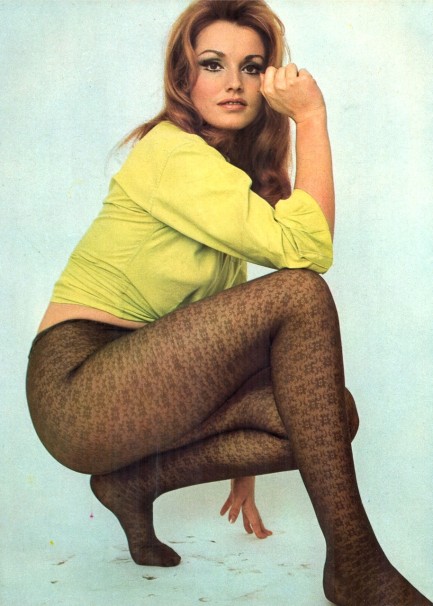 
Polish actress Magda Konopka tries two different styles of leg coverage in these images that first showed up in the Italian magazine Playmen in 1967. Somewhere in the changing room she lost her shirt, but that'll happen. It's happened to us. Konopka is known for such b-movies as Blindman, Robinson and His Tempestuous Slaves, and When Dinosaurs Ruled the Earth (which we've written about to a ridiculous extent), but is probably best remembered for the 1968 thriller Satanik. We haven't watched that, but it's on the list. You can see more Konopka here.
 I came to the bar to have a double—and look. They're about to come over here now. 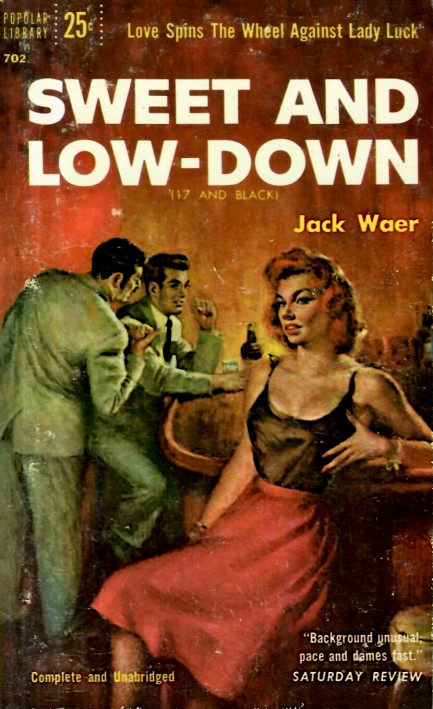
1955's Sweet and Low-Down was originally published as 17 and Black in 1954. The copy we bought is very worn. We looked for a better scan online to use, as we'll sometimes do, but every example we saw was equally abraded until we found one on Amazon, which you see above. It's a pretty nice cover, though uncredited. Is all the wear and tear on copies of this book an indication that it's read and re-read often, and therefore is good? That's certainly what we hoped.
The story, written by Polish born author Alexander Warchiwker writing as Jack Waer, is about Jim Foster, who runs an illegal casino in Hollywood but flees south of the border after taking a rap for his partners. They later ask him to open another casino in Mexico City. He's willing to oblige—for a bigger percentage—but during the opening gala the murder of a local one percenter spoils the party. It's an intriguing set-up for a novel, although it starts slowly. Luckily Waer's writing style maintains interest. For example:
The first time I called, the bim with the sultry voice let on she didn't have any idea who I wanted—said I had the wrong number. When I dialed back her memory was better. His nibs came to the phone. I found out that the vicers were off on a fresh trail. They were out for a pair of Internal Revs who were suspected of collecting a split from the top wigs in the commie crowd. I was as stale as a warmed over soufflé.
Strong approach there. A book this slang heavy goes in for a lot of off-color language, unsurprisingly, and being set in Mexico means there's racist invective. We could not in any way blame you for deciding to take a pass. There are plenty of vintage crime novels that visit Mexico without donning a Klan hood. We're not put off by a smidgen of salty language, but there's a limit—we don't think Foster ever used a non-slur to refer to a Mexican character, even when speaking of his so-called friends.
In any case, he needs to solve the murder, and he does precisely that, and solves another couple of mysteries too. Much of the book takes place within the casino, which would be fine if Waer managed to keep the stew at a hard boil, but his narrative cools considerably toward the finale, and the story drags. The end makes clear that the book was supposed to be a launching point for more novels, and the fact that it wasn't says everything you need to know. But if you find it cheap and don't mind the language, sure, what the hell, give it a read.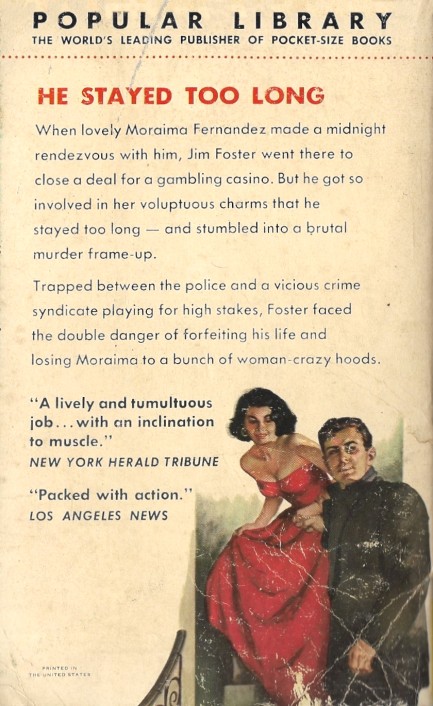
 If you're going to put a musical group together make it the best. 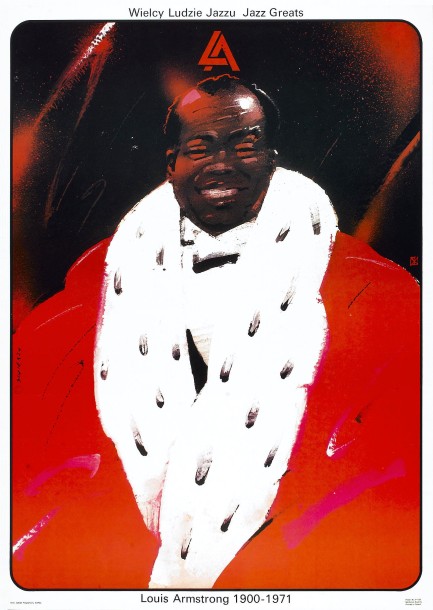
It's been awhile since we featured Polish art, so today we're revisiting the interesting aesthetic of that country with a small collection serving as a reminder that jazz was the predominant popular musical form during the heydey of the pulp era. Polish artist Waldemar Świerzy painted this series of portraits featuring American jazz icons. He signed them all on the left edges. The phrase “wielcy ludzie jazzu” on the top of each print means, “great jazz people,” some of whom, you've noticed, he painted more than once. Świerzy was born in 1931, and painted these in the mid-1980s, focusing mainly on musicians who had been active and popular during his youth. There are even more we didn't show here. Several of these musicians are mentioned by name in books we've read, for example Louis Armstrong, who's the subject of a brief discussion in Harold Sinclair's New Orleans based novel Music Out of Dixie. We think this is nice work by Świerzy. You can see more Polish art here, here, and here. 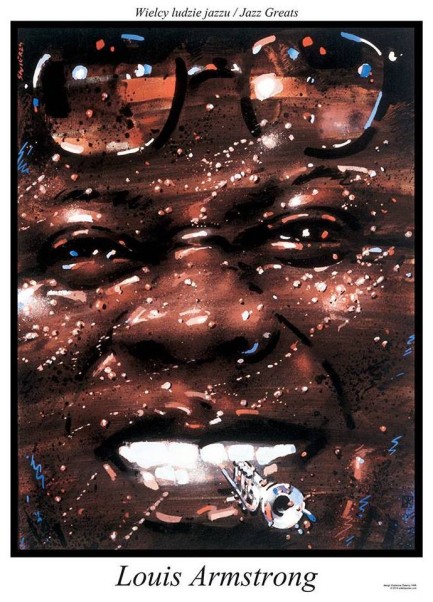 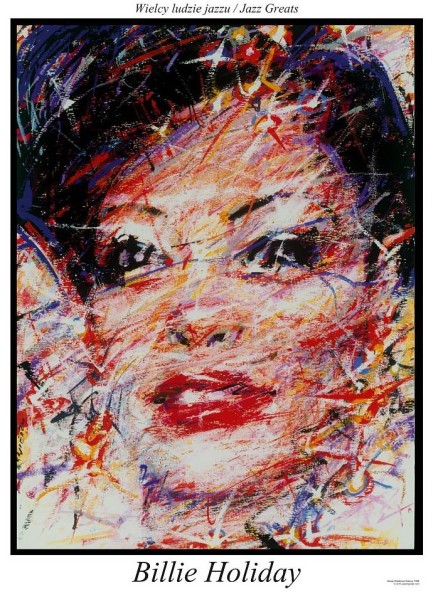 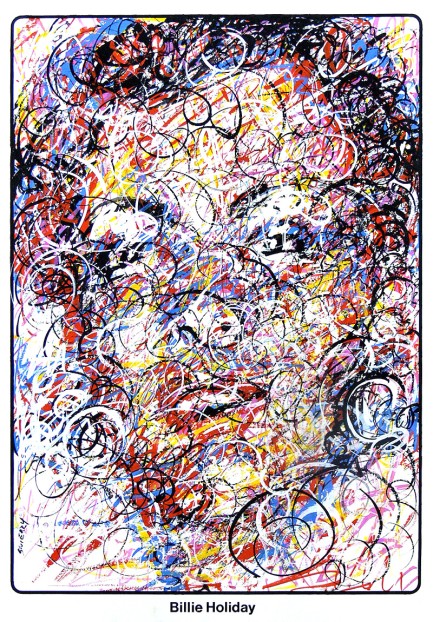 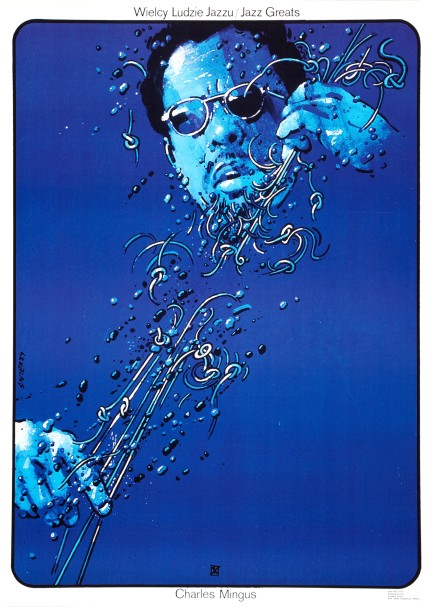 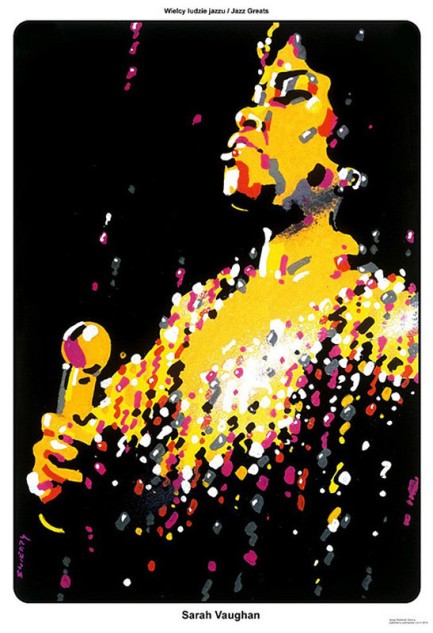 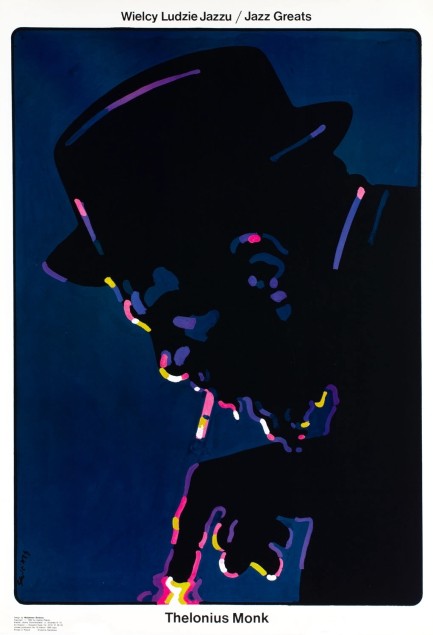 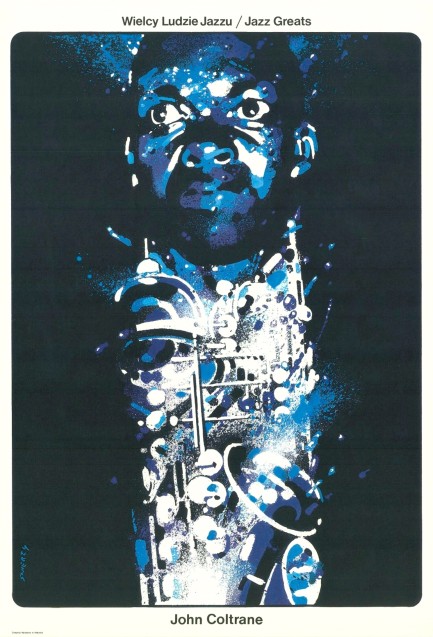 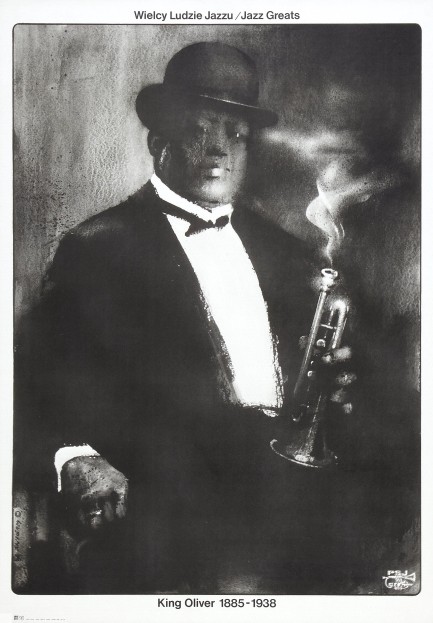 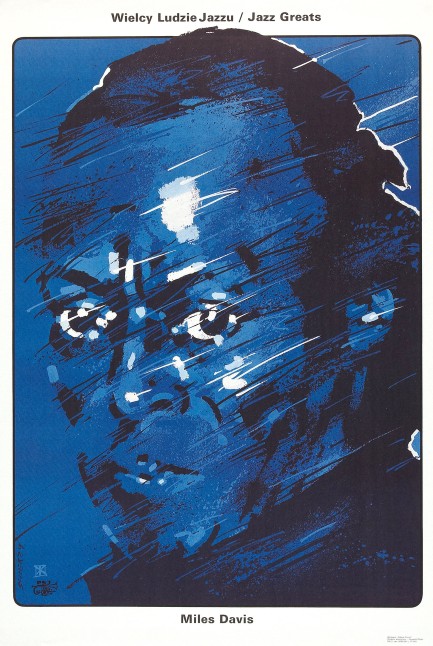 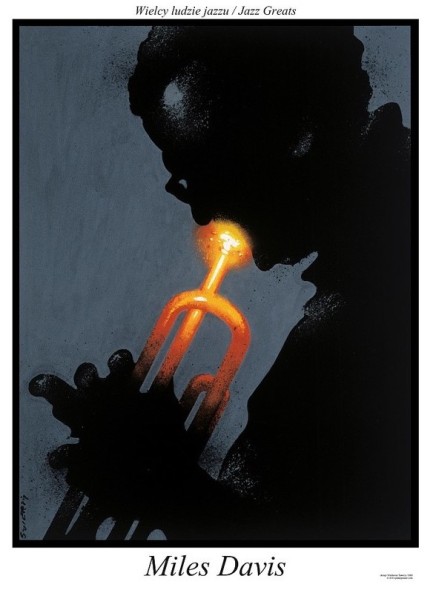 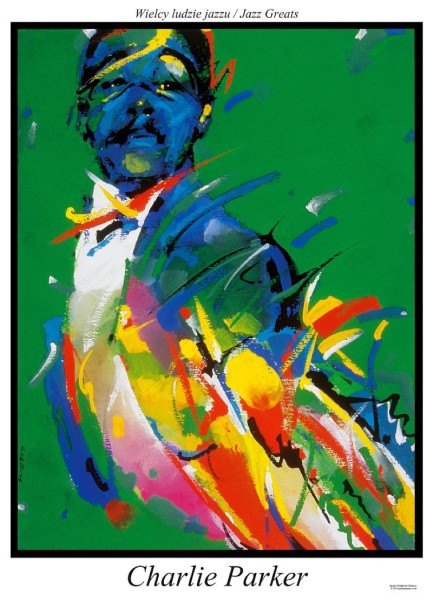 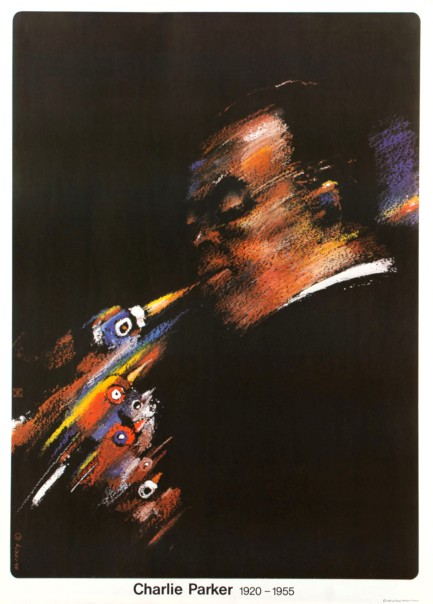 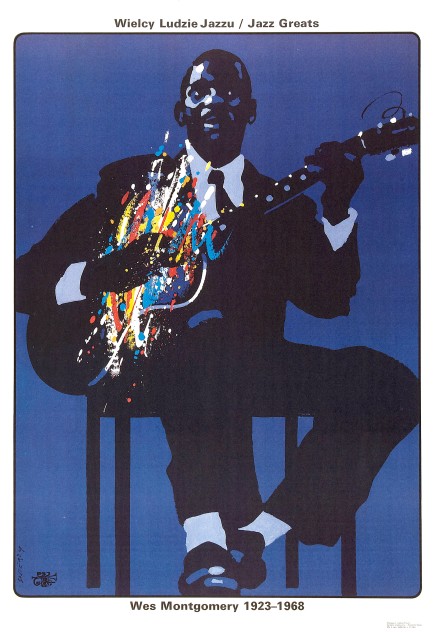
 Hollywood actresses went to the Max to solve their beauty problems. 
We've been seeing this photo online of late labeled as an ice cube mask meant to cure hangovers circa 1947. That seemed unlikely to us, because why would ice cubes on your chin help with a hangover? The only thing that helps a hangover is a sustained interval of unconsciousness. So we dug around and discovered that this is in reality a beauty aid. It was created by Polish inventor and beautician Macksymillian Faktorowizc, who would later become globally famous as Max Factor, and it was specifically made for use by actresses to cool and refresh their faces after being under the hot lights of Hollywood movie sets. Back then (and even today for all we know) actresses constantly washed their faces with cold water, but this required fresh applications of make-up after every rinse. So Factor's mask theoretically was both a time and labor saver. Believe it or not, it wasn't the craziest contraption he invented. In any case—not a hangover cure, but another small internet mystery solved.

 To shoot him... to shoot him not... to shoot him... to shoot him not... 
This photo shows legendary Polish actress Pola Negri, one of the most popular, influential, and highly paid stars of her time. As a megacelebrity she popularized numerous fashion trends, including red toenails. Her fortune was greatly diminished no thanks to the 1929 stock market crash and gold-digging husband Serge Mdivani's bad investment decisions. She divorced Mdivani in 1931, and we hope he counted himself lucky not to have been murdered in his sleep, considering what a terrible husband he'd been. Negri kept acting through the 1930s, had a single role during the 1940s, and finally hung it up after 1964's The Moon-Spinners. In total she appeared in more than seventy films and became one of Hollywood's iconic stars. This shot was made in 1928 for her role as Princess Fedora in The Woman from Moscow.
 Polish painter turns pain into an abstract concept. 
This Polish promo poster was made for the 1965 Japanese psychodrama Utsukushisa to kanashimi to, which in Poland was called Piekno i ból. That translates to “beauty and pain,” whereas the Japanese translates as “with beauty and sorrow.” Both translations are apt descriptions of the movie, which is just as bizarre and twisted as the poster art. We talked about it a while back, so if you're interested have a look here. The poster was painted by Maciej Hibner, a well regarded illustrator active during the ’50s and ’60s whose output is considered collectible today. A lot of his stuff has this same fine art look, which is very different than what we usually share here, but worth a gander just for the sake of its stark contrast with the Japanese poster. We may try to dig up more on Hibner later.
 Faux vintage album cover raises Leeding question. 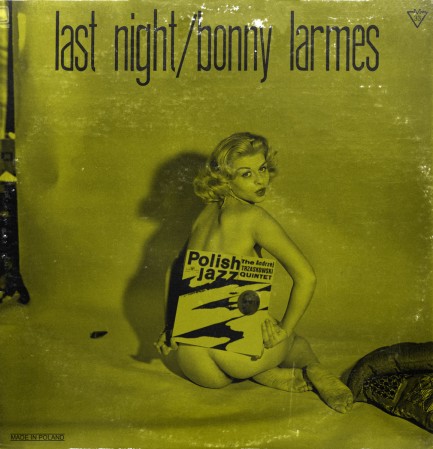 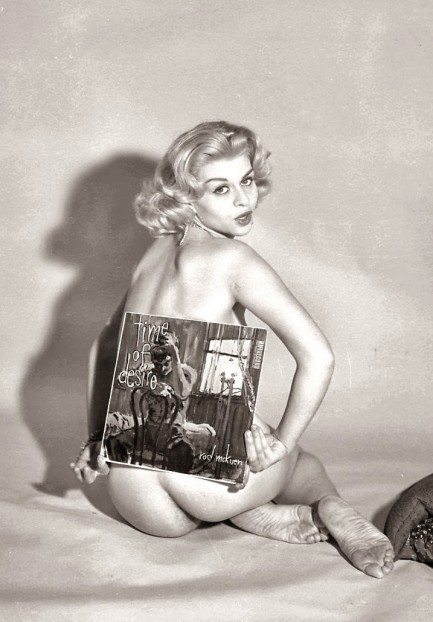
The above album sleeve looks old, doesn't it? It's actually a new release by Polish deejay Bonny Larmes purposely weathered to have that vintage look. We also have the black and white photo his graphic designer worked from, and you'll notice right away that the record the model is holding behind her back has changed from Polish jazz to Rod McKuen's Time of Desire. Since McKuen's record came out in 1958, that gives us a ballpark date on the original image.
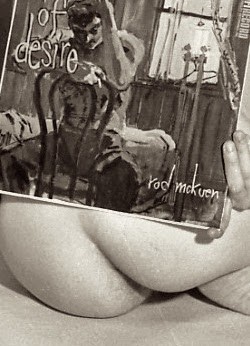 Bonny Larmes is fine, but his music isn't why we posted his album. We're interested in the model. Incidentally, you probably noticed her asscrack hair. If not, look to the right (or above, if you're viewing on mobile). Now you've noticed. Asscrack hair is a relic of the past you'd never see in a modern photo. We think it's cute, but the question is whose asscrack hair is it? Well, the model here is identified everywhere as actress Lila Leeds, but this is another internet replication error, because there ain't no way the woman you see above is also the woman you see below—and the woman below is definitely Lila Leeds. Bonny Larmes is fine, but his music isn't why we posted his album. We're interested in the model. Incidentally, you probably noticed her asscrack hair. If not, look to the right (or above, if you're viewing on mobile). Now you've noticed. Asscrack hair is a relic of the past you'd never see in a modern photo. We think it's cute, but the question is whose asscrack hair is it? Well, the model here is identified everywhere as actress Lila Leeds, but this is another internet replication error, because there ain't no way the woman you see above is also the woman you see below—and the woman below is definitely Lila Leeds.
For even more proof check a 1949 photo, probably her most famous shot, at this link. See what we mean? We also seriously doubt Leeds ever posed nude, and if she did, certainly she never posed asscrack nude. So, hairy girl: not Leeds. But who is she? We took a long look around the internet and came up with nothing, so we'll probably never know. But the main thing is to have at least one site come to poor Lila's defense. And they say chivalry is dead.
 I swear to you that is not my hairy asscrack! I swear to you that is not my hairy asscrack!
 Pulp and art deco. Two great tastes that rarely went together. 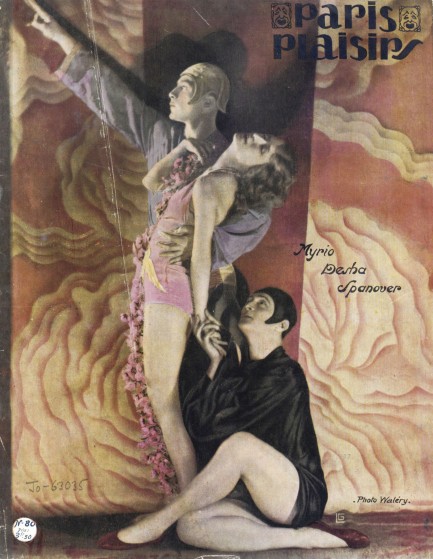
The pulp era is generally agreed as having commenced the last several years of the 19th century and having ended during the 1950s. Art deco is agreed to have begun around 1900 and ended around the beginning of World War II. Despite co-existing, they occupied the same place surprisingly little. You would see crossover in cinematic adaptations of pulp material such as Flash Gordon, with its deco styled spaceships and costumes. Some pulp magazines had art deco influenced fonts, and some hardbacks had art deco sleeve art, such as those designed by Edna Reindel for W.R. Burnett's novels Iron Man and Saint Johnson. But when popular paperbacks and magazines began to focus on high quality cover art they developed their own visual style which we think of today as good girl art, or GGA.
But even if pulp and art deco didn't mix much back then, they mix on our website. Today we have an issue of Paris Plaisirs published in 1929 with drawings, paintings, studio photography, French wit and more. The cover photo-illustration was shot by Lucien Waléry, also known as Stanisław Julian Ignacy Ostroróg. Though his name was Polish he was a British citizen, born in London after his father Stanisław Julian Ostroróg—also a famed photographer—emigrated there in 1856 and became a citizen in 1862. The younger Ostroróg took the pseudonym Waléry and thus forever created confusion with earlier photographers who had used the same name. We won't bother unwinding all those Walérys. You can see another of our Waléry's beautiful art deco covers here, and we have other issues of Paris Plaisirs you can see by clicking the keywords at bottom. 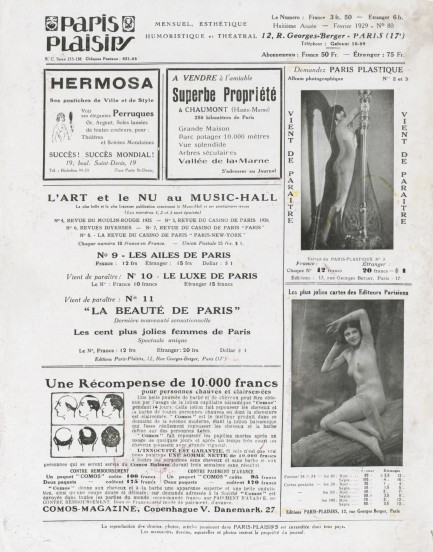 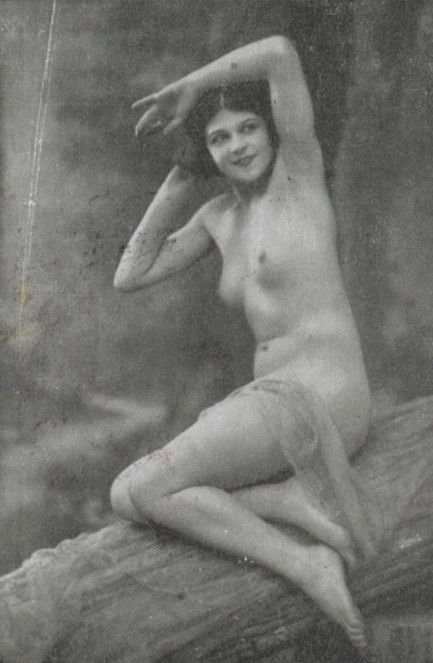 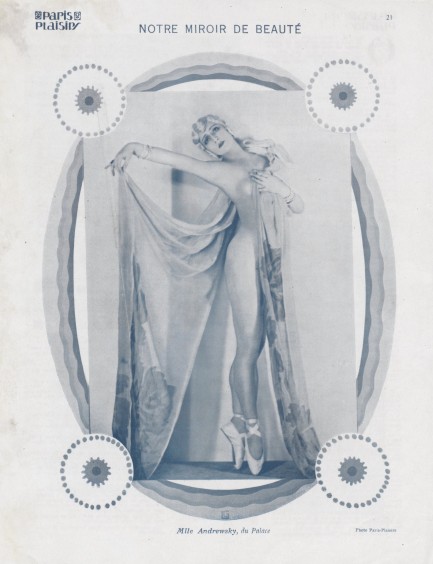 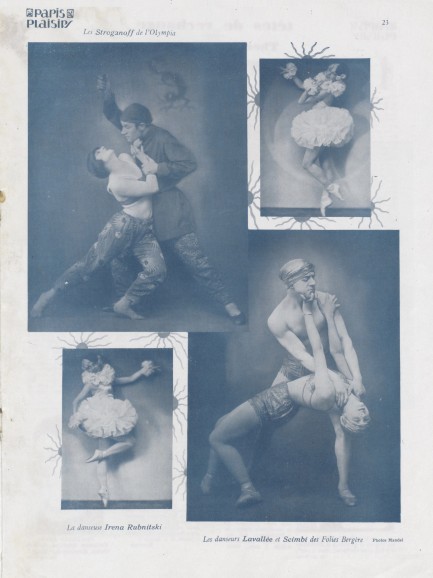 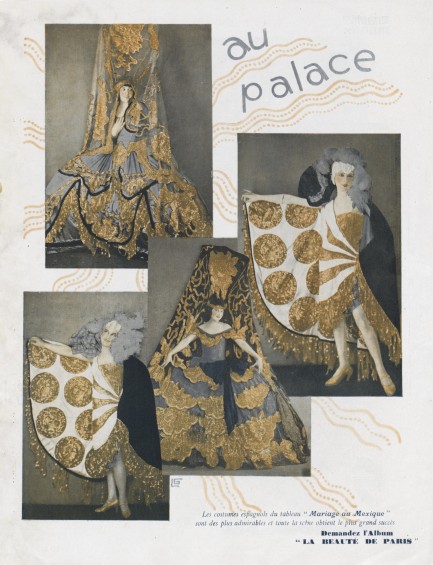 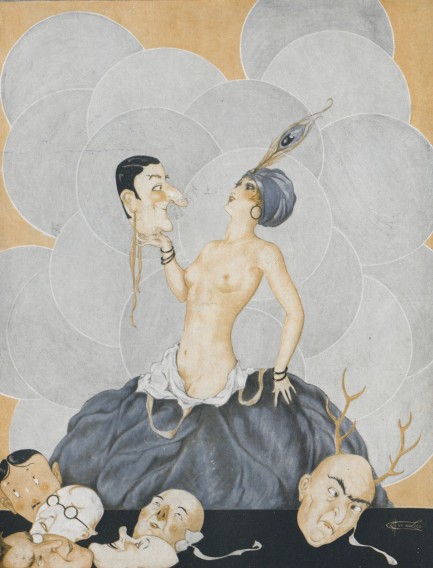 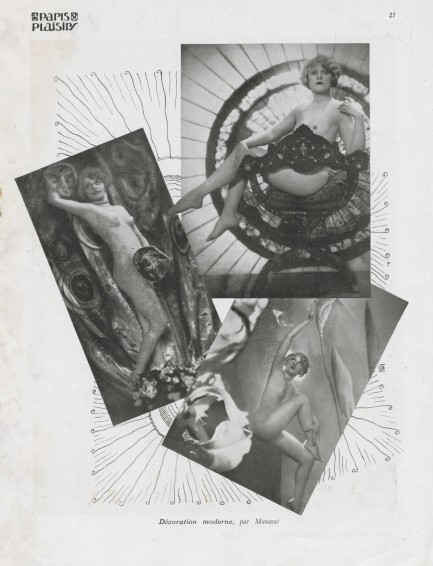 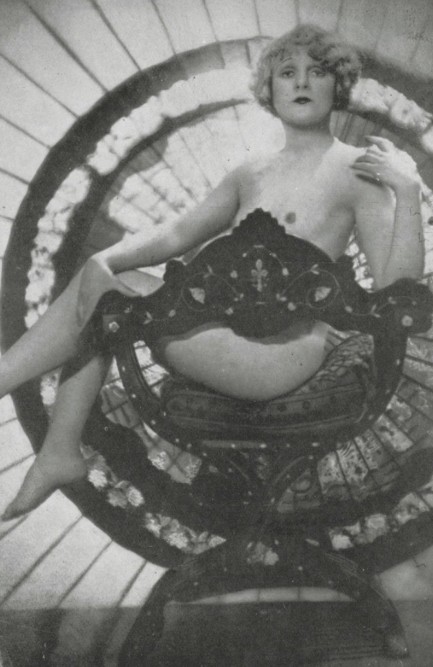 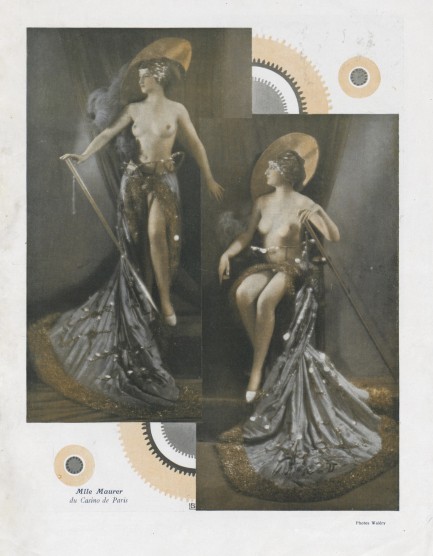 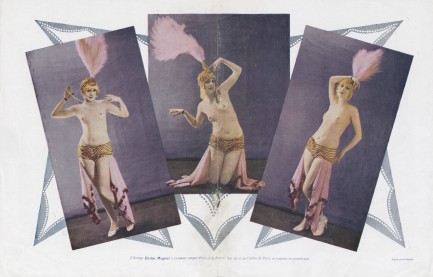 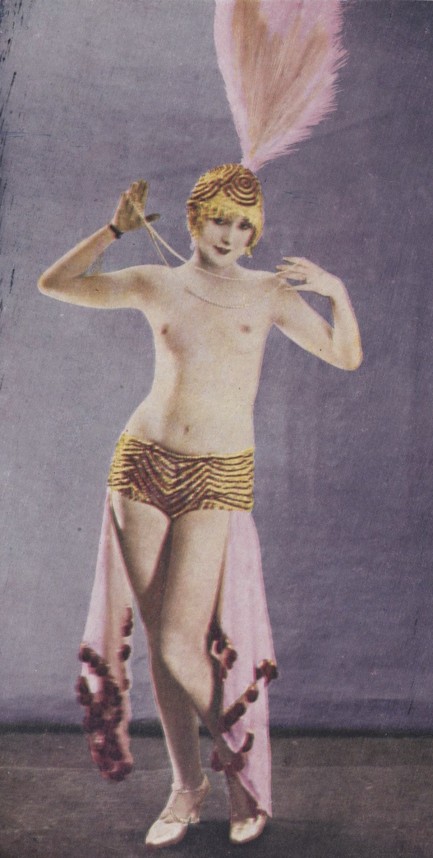 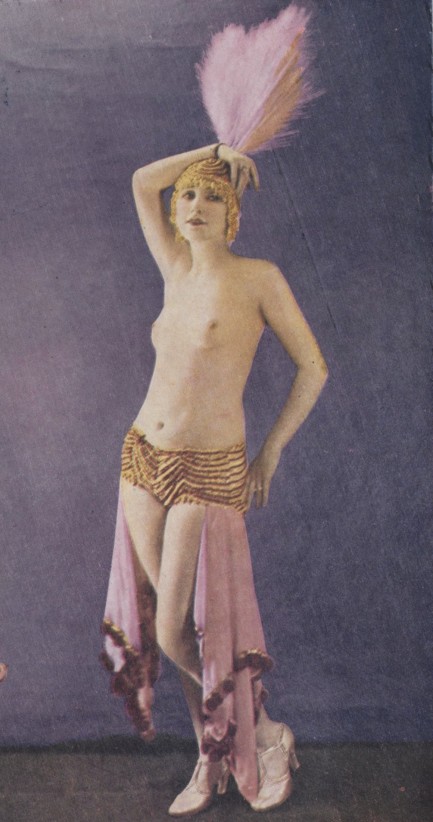 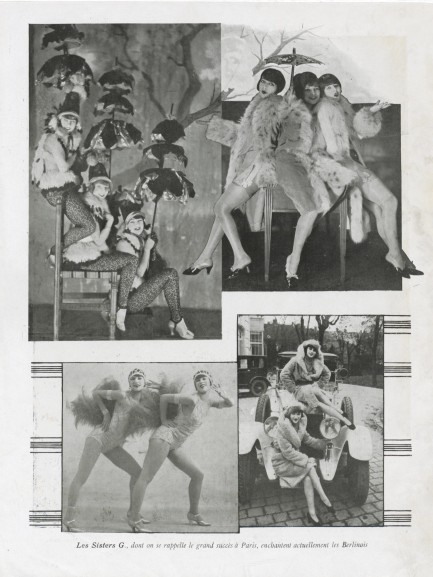  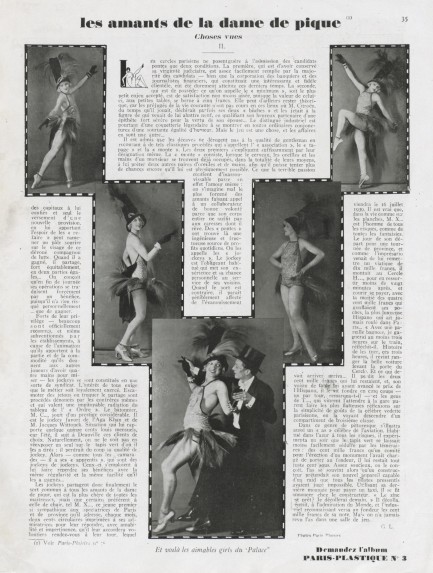 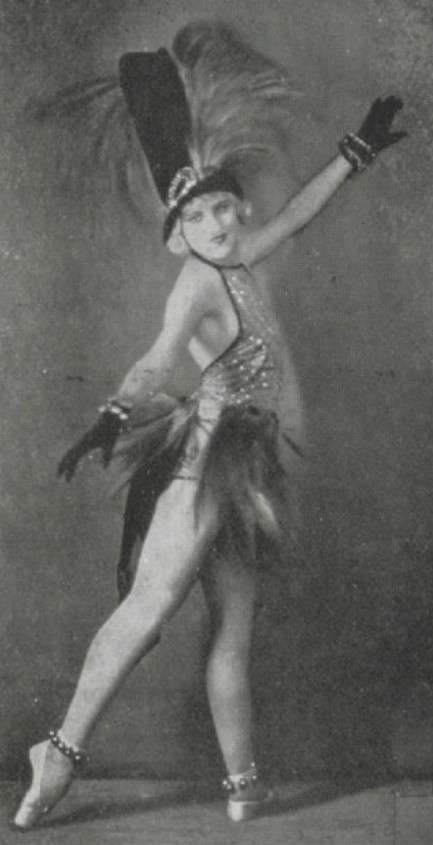 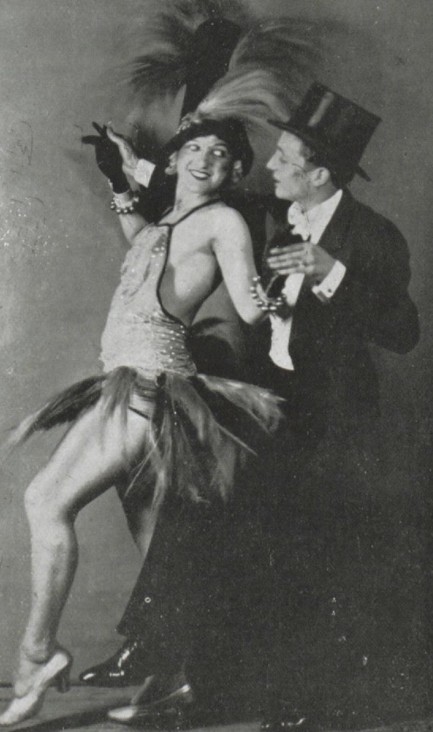 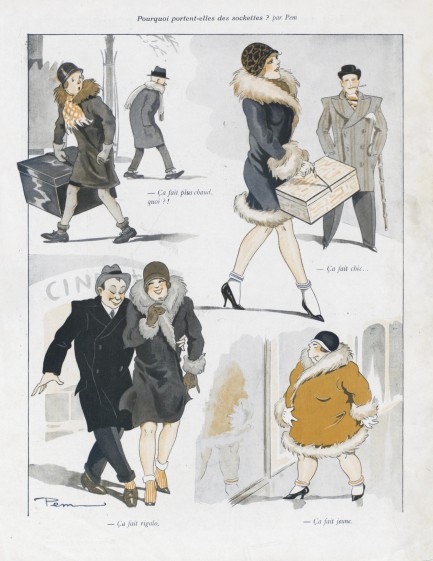 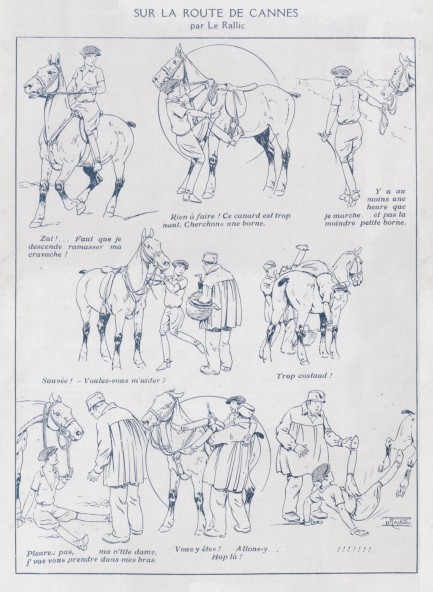 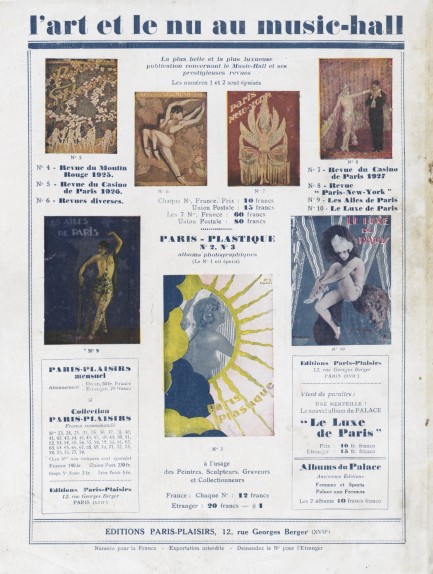
 Who, him? He'll be fine in a minute or two. Everyone who eats here reacts that way when they see their check. 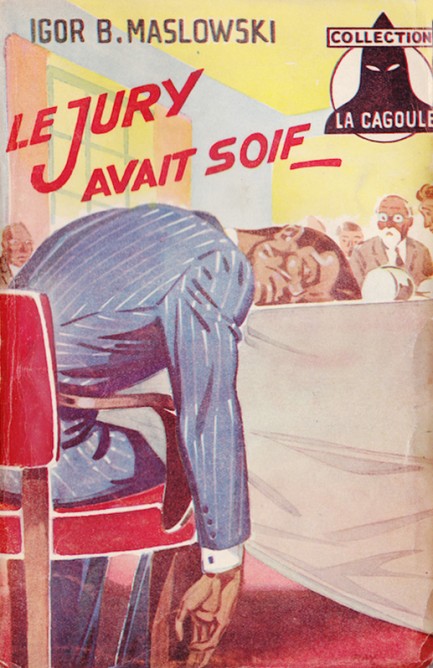
Author Igor B. Maslowski was born in 1914 in Smolensk, Russia, which his parents left to settle in Poland, where Maslowski grew up. After studying French in Warsaw, he went to Paris to study law, and in 1935 he became a reporter for French radio. Later he became a film and theater critic, and from there he moved into writing fiction under his own name and the pseudonym Renée Gaudin. Above you see a very nice cover for his mystery Le jury avait soif, with unattributed art. The book was published by Éditions le Bruyère for its Collection la Cagoule in 1950, and the title in English means “the jury was thirsty.” However, the type of jury here is not a judicial one, but a literary one, convened to select the winner of a prize, a pursuit that's disrupted when one of the panel turns up dead. Pretty soon someone else is dead, and someone else, which in a way isn't a surprise, because the world of literature is actually pretty cutthroat. Aspiring novelists beware. Below, as a bonus, you see a cover of the same novel from Éditions du Chardon's Collection le Carillon, 1954.
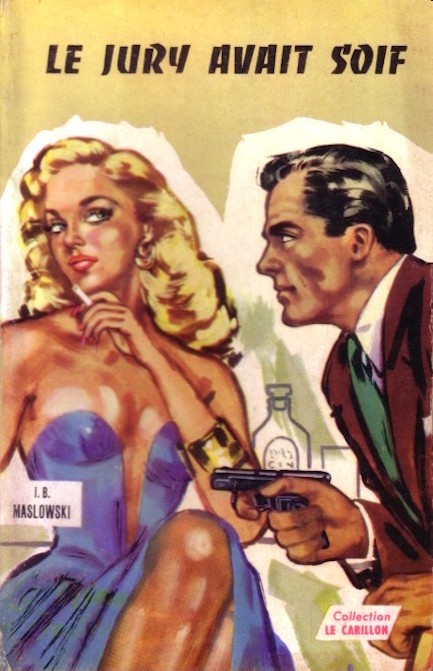
 You know something? Umecka me crazy. 
Polish actress Yolanta Umecka appeared in only five films, one of which was Roman Polanski's Academy Award nominated drama Nóz w wodzie, aka Knife in the Water, in which she plays a young wife whose husband (studpidly) invites a (virile young) hitchhiker along on (what was supposed to be) their romantic lake outing, and is shocked when she (enthusiatically) cheats on him. These husbands just never learn. The above image is a promo from the film, 1966.

|
 |

The headlines that mattered yesteryear.
2003—Hope Dies
Film legend Bob Hope dies of pneumonia two months after celebrating his 100th birthday. 1945—Churchill Given the Sack
In spite of admiring Winston Churchill as a great wartime leader, Britons elect
Clement Attlee the nation's new prime minister in a sweeping victory for the Labour Party over the Conservatives. 1952—Evita Peron Dies
Eva Duarte de Peron, aka Evita, wife of the president of the Argentine Republic, dies from cancer at age 33. Evita had brought the working classes into a position of political power never witnessed before, but was hated by the nation's powerful military class. She is lain to rest in Milan, Italy in a secret grave under a nun's name, but is eventually returned to Argentina for reburial beside her husband in 1974. 1943—Mussolini Calls It Quits
Italian dictator Benito Mussolini steps down as head of the armed forces and the government. It soon becomes clear that Il Duce did not relinquish power voluntarily, but was forced to resign after former Fascist colleagues turned against him. He is later installed by Germany as leader of the Italian Social Republic in the north of the country, but is killed by partisans in 1945.
|

|
|

It's easy. We have an uploader that makes it a snap. Use it to submit your art, text, header, and subhead. Your post can be funny, serious, or anything in between, as long as it's vintage pulp. You'll get a byline and experience the fleeting pride of free authorship. We'll edit your post for typos, but the rest is up to you. Click here to give us your best shot.

|
|































 Bonny Larmes is fine, but his music isn't why we posted his album. We're interested in the model. Incidentally, you probably noticed her asscrack hair. If not, look to the right (or above, if you're viewing on mobile). Now you've noticed. Asscrack hair is a relic of the past you'd never see in a modern photo. We think it's cute, but the question is whose asscrack hair is it? Well, the model here is identified everywhere as actress Lila Leeds, but this is another internet replication error, because there ain't no way the woman you see above is also the woman you see below—and the woman below is definitely Lila Leeds.
Bonny Larmes is fine, but his music isn't why we posted his album. We're interested in the model. Incidentally, you probably noticed her asscrack hair. If not, look to the right (or above, if you're viewing on mobile). Now you've noticed. Asscrack hair is a relic of the past you'd never see in a modern photo. We think it's cute, but the question is whose asscrack hair is it? Well, the model here is identified everywhere as actress Lila Leeds, but this is another internet replication error, because there ain't no way the woman you see above is also the woman you see below—and the woman below is definitely Lila Leeds. I swear to you that is not my hairy asscrack!
I swear to you that is not my hairy asscrack!































































































